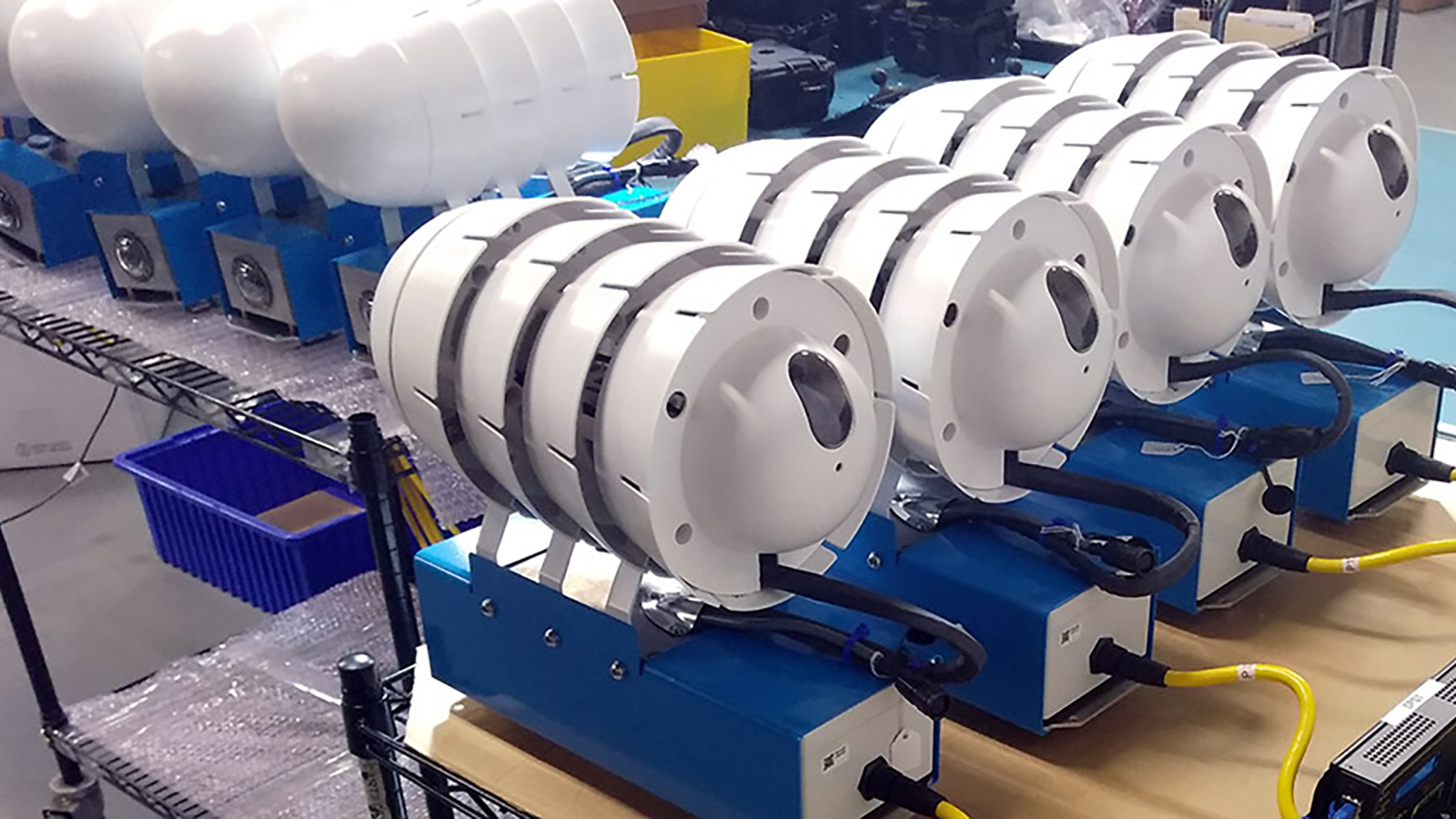SAGE: A Software-Defined Sensor Network
SAGESage is a project funded by the National Science Foundation to design and build a new kind of national-scale reusable cyberinfrastructure to enable AI at the edge. The project is led by Northwestern University and leverages open source hardware and software developed by Argonne National Laboratory.
Geographically distributed sensor systems that include cameras, microphones, and weather and air quality stations can generate such large volumes of data that fast and efficient analysis is best performed by an embedded computer connected directly to the sensor. Sage will explore new techniques for applying machine learning algorithms to data from such intelligent sensors and then build reusable software that can run programs within the embedded computer and transmit the results over the network to central computer servers. Distributed, intelligent sensor networks that can collect and analyze data are essential for scientists seeking to understand the impacts of global urbanization, natural disasters such as flooding and wildfires, and climate change on natural ecosystems and city infrastructure. Sage will deploy sensor nodes that support machine learning frameworks in environmental testbeds in California, Colorado, and Kansas and in urban environments in Illinois and Texas. The reusable cyber-infrastructure running on these testbeds will give climate, traffic, and ecosystem scientists new data for building models to study these coupled systems. The software components developed in Sage will be open source and provide an open architecture that will enable scientists from a wide range of fields to build their own intelligent sensor networks.
Partners will deploy Sage testbeds in Australia, Japan, UK, and Taiwan, providing scientists with even more data for analysis. The toolkit will also extend the current educational curriculum used in Chicago and will inspire young people – with an emphasis on women and minorities, to pursue science, technology, and mathematics careers – by providing a platform for students to explore measurement-based science questions related to the natural and built environments.
Sage will develop open source computer code and provide open hardware design documents. The data from sensors will also be hosted in the cloud to facilitate easy data analysis.
Project Overview
SAGE nodes will provide a set of baseline measurements across all partner instruments, along with enhanced sensors selectively installed at the partner sites. The project will leverage experience gained through the successful deployment of hundreds of commercially built and tested nodes in the AoT project (Chicago and partner cities), implementing Waggle’s resilient node design to support reliable sensing and edge computation. Building on Waggle’s end-to-end data pipeline, integrated data repository, and data APIs, SAGE will develop a common programming environment, empowering NEON, ARM, HPWREN, UWI, and AoT users to collaborate and add new sensing and analysis capabilities.
SAGE will also integrate a new generation of ML hardware into Waggle nodes, extending AoT demonstrated capabilities for complex analysis of behaviors in both natural environments (flora and fauna) and human-centered ones, and implementing multimessenger adaptive measurement capabilities.
Combined, these new capabilities will create an integrated research infrastructure to enable scientists to test existing and new theories, from the Human-Technology Frontier in Smart and Connected Communities to the Rules of Life. Moreover, SAGE will build on STEM education and outreach programs already successfully established by each of the partners. For instance, the Lane of Things (LofT) program in Chicago has trained over 450 students in measurement-based science and wireless sensor design and deployment.
Novel Contributions of SAGE
SAGE provides novel capabilities to explore complex, convergent research questions spanning natural and built environments, from neighborhood to continental scale:
- Adaptive instrumentation that responds to local condition and events, linking observations in real time, spanning ecosystems, atmosphere, urban, and extreme events (e.g., wildfires, heatwaves, storms).
- Research Instrumentation to improve and synergize sensing efforts across NSF, with new flexible, interconnected resources to support research integrating BIO, CISE, ENG, GEO, and SBE.
- High-performance edge computing, coupled with advanced sensors, to give scientists software-defined sensors leveraging new ML algorithms at the edge.
- A cloud-based development environment for students and scientists to write edge-to-cloud software pipelines
- A programmable infrastructure to test the limits and capabilities of machine learning and deep learning for future intelligent sensor designs.
- Replicable technology, policy, and process for federated growth beyond initial partner instruments.
Recent News
- SAGE - Northwestern press release can be found here.
- UCSD Supercomputer aids in battling Southern California wildfires (Oct, 2019)


